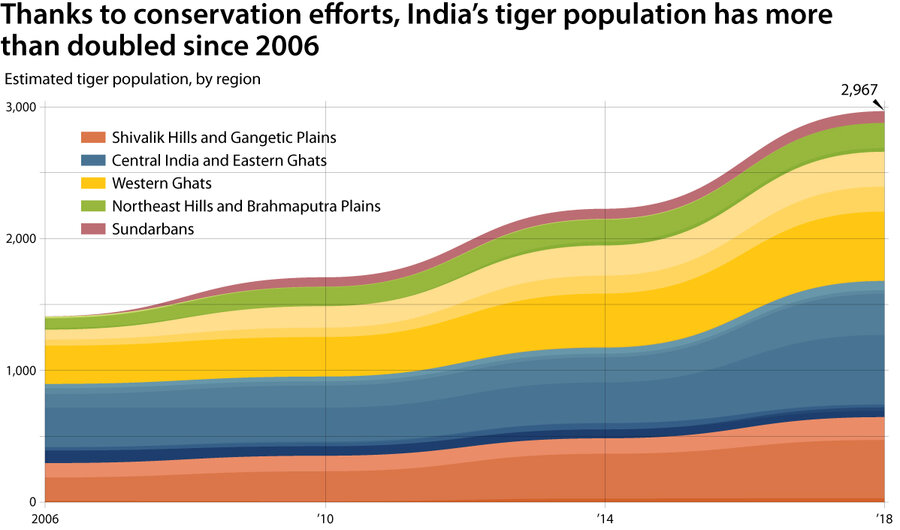India’s tigers come roaring back
Almost a decade ago, India implemented a goal to double its endangered Bengal tiger population by 2022. On International Tiger Day, India’s Prime Minister Narendra Modi announced that the country had reached its goal four years earlier than hoped.
Due to stricter wildlife policies and improved safety monitoring, India’s tiger population climbed 33% between 2014 and 2018. While the worldwide tiger population is still stumbling along at just under 4,000 tigers, India is home to almost three-quarters of the cats.
“There are several plants and animals out there that need our help,” Mr. Modi said at a press conference. “What is it that we can do, either through technology or human action, to give them ... a life so that they can add beauty and diversity to our planet?”
In the past decade, India has created almost two dozen tiger reserves. Besides serving as a protective area for tigers, sanctuaries also allow for other wildlife and forests to prosper. To count tigers, India uses camera traps, placed in wildlife reserves. Tigers are tracked through pattern recognition programs, which detect stripe patterns and create three-dimensional representations of individual cats.
There is still work that needs to be done in some Indian villages, where tigers and villagers have long had a violent relationship. In parts of eastern India, the tiger population is still declining despite funds to counteract the slide.

Wildlife Institute of India National Tiger Conservation Authority






